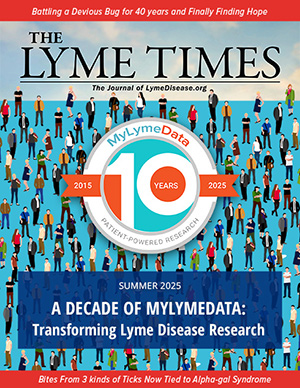Children and Lyme Disease Symptoms Lyme disease can be particularly difficult to identify in children and adolescents.
L yme disease can affect almost any part of the body, including the central and peripheral nervous system, heart, brain, muscles, joints, skin, and eyes.
Multiple symptoms with migratory joint pain that comes and goes is the hallmark of Lyme disease.
Symptoms can appear soon after the infection or may not present until months or even years later.
In the early stage of the disease, patients typically experience flu-like symptoms including, fatigue, headaches, fevers, chills, body aches and pains, and gastrointestinal problems. There may also be objective signs of the disease present, such as Bell’s palsy (drooping on one half of the face) or the appearance of a erythema migrans (EM or bull’s-eye) rash. The EM rash is a clear indication of Lyme disease.
Facts about the bulls-eye rash
- There may be one single rash at the site of the known tick bite or multiple rashes, which indicates the Lyme bacteria are disseminating to other parts of the body.
- The area of the bite is usually not itchy and should not be confused with a spider bite.
- The rash usually appears within the first week but it can take up to 30 days.
- The rash may appear on any area of the body, it is not always at the site of a known tick bite. It may also be hidden under the hair, on the scalp or in the perianal area. Studies have found that children are more likely to have a tick bite in the neck and head region.
The number of patients who have an EM rash has been disputed. Studies have found the EM rash is absent in more than 50% of Lyme disease cases. (The CDC reports the rash is present in 70% – 80% of cases.) Dr. Charles Ray Jones has found that according to his clinical experience, only 7% of the pediatric patients report having an EM rash, while secondary EM rashes are reported in 3% to 5% of his patients. These rashes are temporary and can be seen one minute but disappear the next.
Bottom line: Your child can have Lyme disease and not have the bull’s-eye rash.….. Join or login below to continue reading.




























